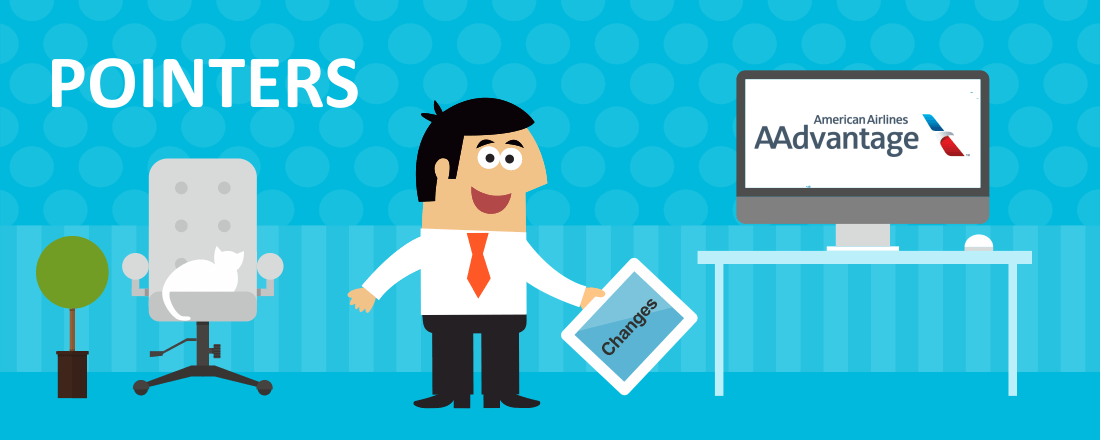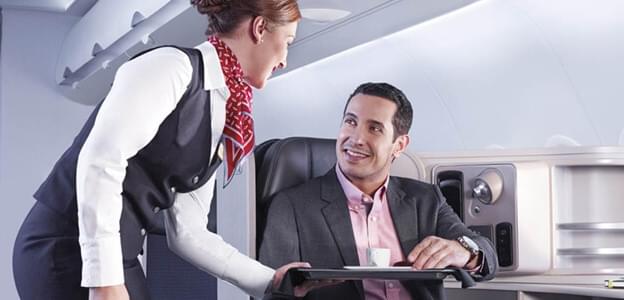
American Airlines recently announced more changes to the way flyers will earn miles and elite status, and it’s getting more complicated than ever to figure out what a trip will yield when it comes to mileage rewards.
It is no surprise that American is turning the AAdvantage program into a revenue-based model, which means miles are awarded based upon ticket price not distance flown. Delta and United have made a similar switch. In all three programs, members earn 5 miles per dollar spent. Elite-level flyers earn a progressive number of bonus miles ranging from a total of seven to 11 miles per dollar spent, depending upon one’s status.
When American announced this change last year, the airline was vague on when it would take effect. Now, we know: August 1. The airline is giving at least two months’ notice, but for those that have booked travel past August 1 already, there is no grace period for mileage earning the old-fashioned way. Starting in August all flights earn miles based upon the cost of the ticket even if you bought a ticket prior to this announced change.
While a huge bummer, it is the way the airline world is moving when it comes to mileage earning. But, American doesn’t stop there. It is also following the lead of other airlines and imposing minimum spend requirements for those interested in earning elite status. This means that fliers used to buying the cheapest tickets will take much longer to earn status than big spenders.

Let’s say you have no status with American and buy a $105.60 domestic ticket. To calculate the mileage earning, take $100 (the amount of the ticket after taxes are taken out) and multiply that times 5. You will earn 500 miles for the flight, and $100 will go toward your minimum spend requirement. To earn American’s entry-level Gold status, you need to spend $3,000 in a calendar year. This new spending requirement will surely kick out flyers that were used to earning status based upon the distance of their flight only as it creates a new hurdle for them.
Business travelers and those whose company pays for their flight may not have as hard a time, but leisure fliers and independent travelers will miss out on some of the status perks in the coming year if they don’t pay attention.
What is disappointing is that American is not copying all of the rules of the competition. Delta and United allow travelers with the airlines’ co-branded credit cards to waive this new spending requirement if they make $25,000 in any type of purchase to their credit card during the year.
American has made no such announcement of a similar waiver. To earn Gold status, flyers must spend at least $3,000 with American and fly 25,000 base miles a year; Platinum status requires $6,000 and 50,000 flown miles per year. Top-level Executive Platinum status requires flying 100,000 base miles per year and spending $12,000 with American.
The changes are not just related to American’s own flights. If you fly a partner airline (including those in American’s oneworld alliance), there are changes in store, too. Redeemable miles and elite qualifying miles will be earned using a complex calculation based upon the fare and distance traveled and varies with each airline. Want to see the chart for that? There isn’t one yet. American says it’s in the works for later this summer.
If you are lucky enough to have someone else buy your tickets (and can follow the new earning rules), there are changes afoot for the elite program, too. American will now prioritize upgrades based upon a combination of elite status and a rolling 12-month calculation of how much you spend with it rather than list people based upon status and date of ticket purchase.
American is making a few positive changes for elite members like a new elite level called Platinum Pro, given to those that fly 75,000 base miles a year. Until now, flyers stuck in the vortex of flying between 50,000 and 100,000 miles were left only with Platinum status. This new change recognizes that uptick in flying and comes with a higher upgrade priority and mileage earning.

American is also letting Executive Platinum members (the highest elite tier) enjoy space-available upgrades on award tickets (something Delta does and United offers for those that have certain United-branded credit cards).
Airlines have a responsibility to their shareholders to maximize profits, which is totally understandable. But, constant changes to a loyalty program confuse and irritate travelers to the point of frustration. Many might find it easier to simply choose the airline that flies at the most convenient time they need to travel rather than remain loyal to one particular program.
If you are looking to earn the most miles possible, flying American Airlines and crediting flights to Alaska Airlines Mileage Plan program could be the answer. Alaska’s program still earns miles based upon distance flown and has lots of great airline partners like Cathay Pacific, Emirates, Icelandair and Korean Air.
Mileage earning and elite status has taken a scientific twist of late making it more complicated to understand just how they work, but if you play your cards right you can still come out ahead in the long run!






